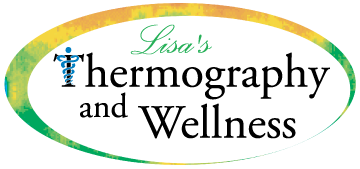FAQ
What is Thermography?
Thermography, or Infrared Thermal Imaging, is a unique technology that takes a picture of inflammatory patterns on the skin. It is different than other imaging tools because it helps us to see function (physiology). MRI and X-ray detect anatomical or structural changes. Thermography was approved by the Food and Drug Administration (US) as an additional health assessment tool in 1982.
Clinically, thermography assessments rely on the sympathetic nerve control of skin blood flow and the ability of the sympathetic nervous system to respond, and react, to pain, pathology, injury or dysfunction anywhere in the body. In other words, the skin responds to physiological changes and a thermography device records those changes.
Thermography Medical Clinic uses the most advanced infrared cameras (with the highest resolution in the industry) with patented software to generate the most accurate thermal maps of the skin.
What can Thermography be used for?
Thermography provides a unique picture of the current status of inflammation throughout the body. Persistent levels of inflammation have been linked to the development of numerous chronic diseases.
By allowing us to visualize our current level of inflammation, thermography provides not only a clear guide to our current state of health and to the formulation of a treatment plan but also serves as a motivational tool for taking charge of our health and wellness plan. As a safe and non-invasive technology, thermography imaging is easy to replicate which allows us to conveniently and regularly assess progress of treatment plans.
What will the thermography report tell me?
A healthy body is expected to be thermally symmetrical. The thermography report: (1) identifies any signs of significant asymmetry in temperature and any unusual thermal patterns which can indicate occurrences such as: natural healing signs of inflammation, blood perfusion, lymphatic congestion, injury, hormonal imbalance, and much more; (2) provides an assessment of the level of concern (low, moderate or high); and (3) recommends additional external tests for further investigation or correlation, if necessary, or thermography follow-ups to establish a stable thermal baseline or to monitor changes. The report also includes the set of thermal images on which the assessment is based.
Is it a proven technology?
Thermography provides an accurate image of the status of inflammation, which has now been demonstrated to be inextricably linked to the development of many chronic diseases. There is also growing evidence of a substantial increase in the effectiveness of screening procedures when multiple tests, including thermography, are included in health assessments – precisely because each test provides unique information about the state of health.
The role of thermography in medical practice will continue to expand as the exact role and importance of inflammation in disease development is more widely adopted into, and discussed within, the standard curriculum in medical schools.
Is it safe?
Who reads the images?
The images are sent via a secured server to Dr. Sharon Edwards at Thermography Medical Clinic where they will interpret the image to generate your thermography report. A very formal interpretation is made and sent to us where we will review the results and make suggestions or referrals if necessary. You are given a copy of the report and frequently we send copies of the reports to physicians for their records.
What happens if I get an abnormal result? What do I do?
Who can benefit from infrared imaging?
How deep can thermography see into my body?
What imaging results are considered to be?
I am a cancer survivor. Can infrared imaging help me monitor my breast?
If I have something suspicious looking, will the doctor at least say something?
Can thermography help prevent breast disease?
What are your interpreting physicians looking for?
What would you do if you were diagnosed with breast cancer?
What is a baseline?
A baseline is two identical studies, taken at two different times to determine if patterns are stable or if there are any changes. Therefore, the follow-up appointment is the most valuable. If the patterns are stable and not significant, there will be a recommend annual follow-up or earlier if any concerns should arise in the meantime. If there is not stability, there may be recommendation for further clinical evaluation and another follow up in 3 – 6 months.
